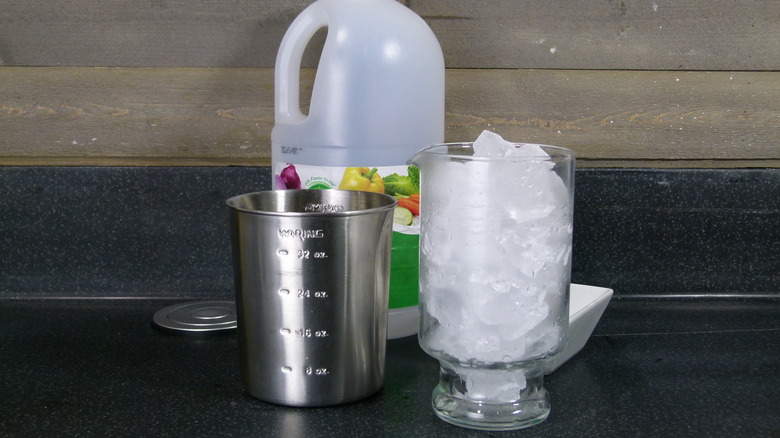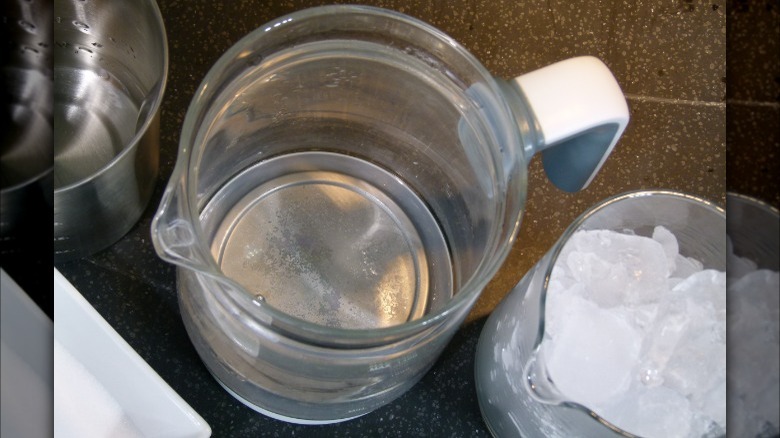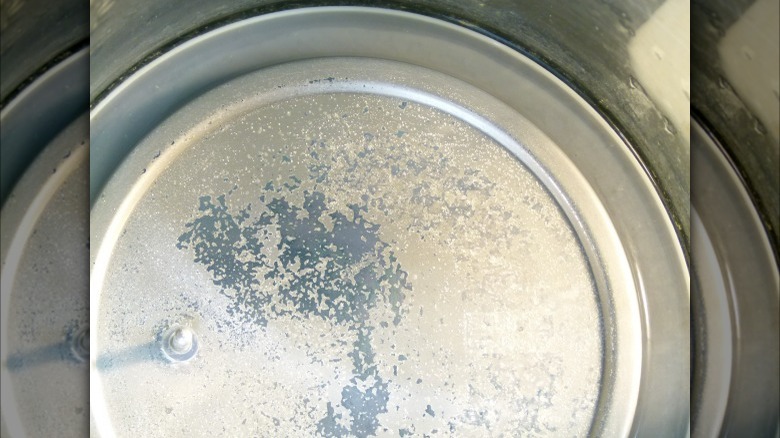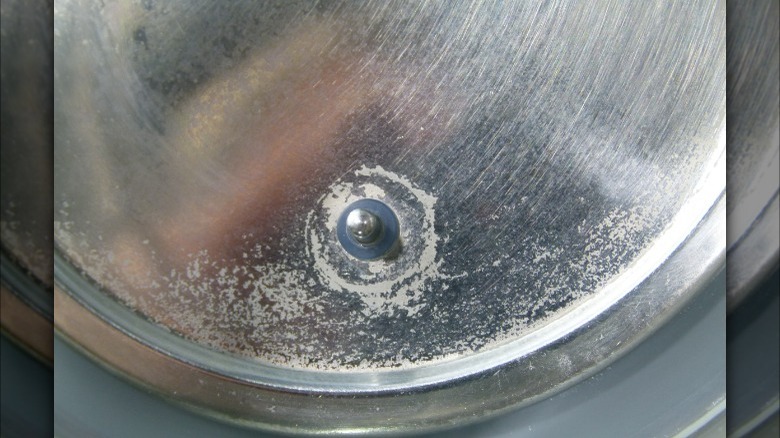TikTok's Viral Tea Kettle Cleaning Hack Didn't Quite Deliver
When we find ourselves watching videos about cleaning tea kettles, it's not because TikTokers are endlessly fascinating but because the topic must be important to our readers. So what did we find? Many methods to remove limescale (deposited by hard water over time) and the invariable use of vinegar or lemon juice. What caught our eye in Carolina McCauley's take, then, wasn't the vinegar. Instead, it was two other ingredients in her #FamilyRecipe for a descaled kettle: salt and ice. McCauley's video wasn't the only one to include the ingredients, but most by far used vinegar (or lemon) and water. And of the few with ice and salt, most (like Christa Santos) used some fairly aggressive swishing/agitation of the mixture, presumably to leverage the abrasive properties of the just-added salt and ice.
Not McCauley, though. She simply lets the concoction sit for one hour, empties the kettle, and then shows it clearly cleaner and completely descaled. What on earth, we wondered, are the salt and ice doing in this mix?
Commenters on the video wonder much the same. Several suggest that simply boiling the vinegar would have the same results. Others remind McCauley she can use lemon as well. And several even addressed the ice cubes but got no reply. Look, we get it. TikTok can be a bewildering place, and few of us around here are chemists, including the curious user called HEART MY COMMENT who wonders, "Does it work in clog toilet?" We did, indeed, heart that comment.
What you'll need to try the hack
We decided to test the descaling hack ourselves. Unlike many #CleanTok notions, this one didn't require us to track down any obscure-until-suddenly-popular products endorsed by TikTok influencers. We had what we needed: 1 cup of vinegar, 1 tablespoon of salt, some ice cubes, and one hour. The hour, we believed, would be the most scarce component. But what about a tea kettle with limescale deposits?
We'd like to say we had a great deal of trouble finding a kettle in such disarray, but the truth is that the first kettle to hand appeared to have a clear and distinctive layer of calcium carbonate forming on its bottom. And once you discover a clear and distinct layer of calcium carbonate on your bottom, the shame is palpable. But we took courage from the countless TikTokers with even filthier kettles and forged ahead.
It's worth noting that one commenter advised that "it tastes better when its [sic.] not clean." This notion probably comes from the lore one periodically hears about how washing teapots, French presses, and espresso pots can ruin the subtleties of taste you'd get otherwise. We have not found this to be true, and neither have a vast majority of experts online. But it's mostly irrelevant because this is not a teapot, but a tea kettle ... a means of heating water. Whatever taste, good or bad, is imparted by the hard water that causes limescale, the already-deposited, insoluble scale won't affect flavor.
How our test went
The experiment itself was easy enough, though we did have some misgivings about using a glass kettle instead of an aluminum or stainless steel one like McCauley's. But other vinegar/salt/ice users did the trick with glass, and none of the science we read indicated that the container's material would matter. We dumped everything in and gave it one good swish to make sure the salt was fairly evenly distributed, then set a timer for one hour.
After the timer sounded, we decanted the vinegar mixture into another container and had a look. If there was any difference, it was very minor. A quick swipe with a microfiber cloth seemed to remove some of the scale pretty easily, so we thought perhaps it was getting loosened up but not quite free. We replaced the vinegar solution, gave it a vigorous swirl in case the remaining ice helped, and let it sit for a few more hours. When we got back to it, it was noticeably better but nowhere near as clean as the TikTok demonstrations.
Did the hack live up to the hype?
Everything we read suggested that salt is used for its abrasive properties rather than as a means of chemically removing limescale. If salt removed limescale, salt-based water softeners would both prevent future limescale and get rid of current buildups, but the consensus is that it does not do the latter. While salt and cold will slow or stop the process of scale formation, no one claims to use them to keep scale from re-depositing after cleaning. The abrasiveness of the combination is the likely source of McCauley's success, but it seemed to be insufficient in our case.
When something clearly works for dozens of TikTokers or maybe millions of people in general, but it doesn't work for you, you can't conclude it's a bad approach. Any number of factors could've fouled our results. What we call limescale isn't always made entirely of calcium carbonate. Perhaps some other water treatment chemical worked its way into our water and then out of it in our tea kettle. And the cleaning did do some good. There's a clear line where the vinegar mixture stopped, below which there's far less residue on the glass. And most of the residue came off the bottom when we dried it with a paper towel. On the whole, it seems like vinegar is a fine choice for cleaning limescale, but for an abrasive, we'd go with something more direct and efficient, like a brush or scrub pad over salt.



